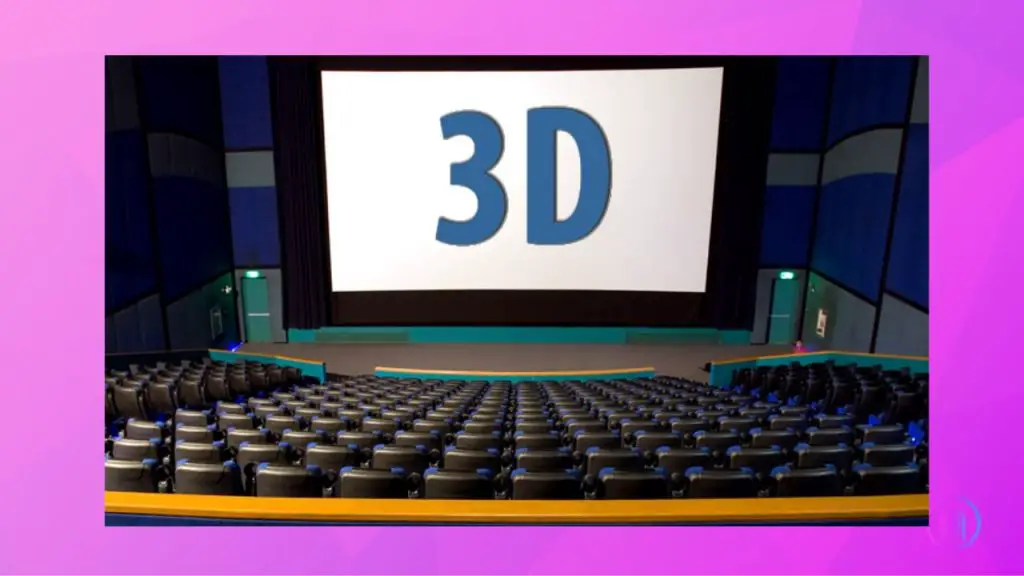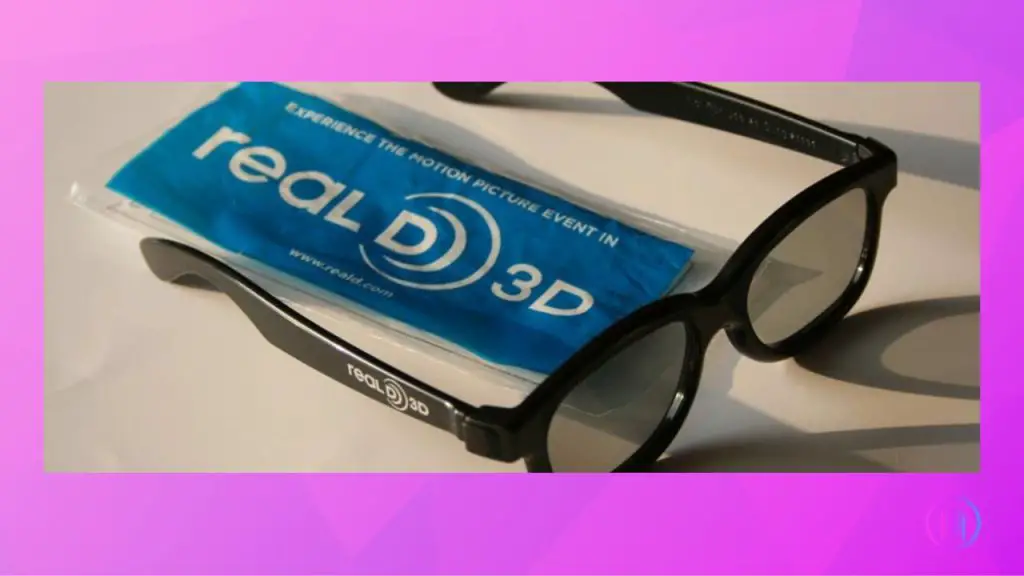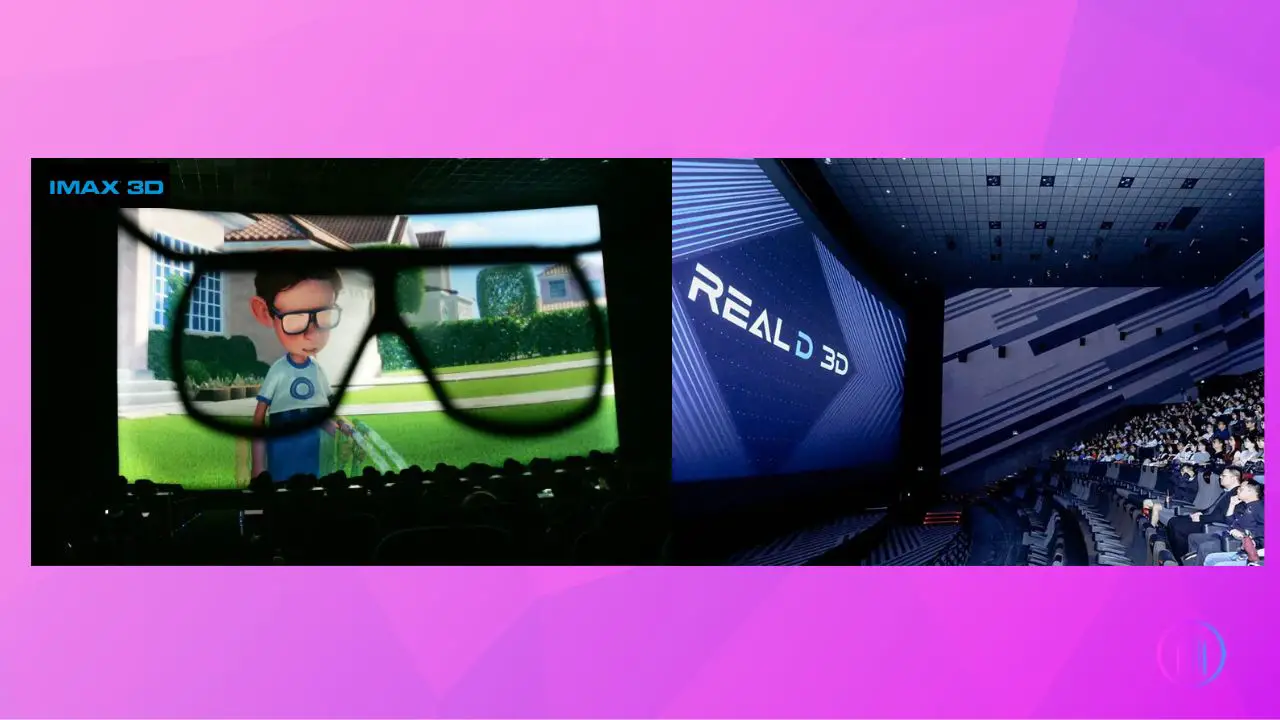Imagine this: You’re about to watch the latest blockbuster, and you have a choice to make – IMAX 3D with its immersive, gigantic screens, or RealD 3D with its widespread presence in theaters near you. This choice isn’t just about picking a seat; it’s about choosing how you want to experience the world of cinema.
Why is this important? Because the way a movie is presented can transform a simple film into an unforgettable experience. Whether you’re a hardcore movie lover or someone who enjoys an occasional trip to the cinema, understanding the difference between IMAX 3D and RealD 3D can significantly enhance your viewing pleasure.
In this article, we’ll delve into the unique features of IMAX 3D and RealD 3D. We’ll explore their technology, the viewing experience they offer, and what makes each of them stand out. By the end of this read, you’ll not only understand the difference between these two formats but also be able to make an informed choice for your next movie outing. So, are you ready to dive into the fascinating world of 3D cinema? Let’s begin!”
The Basics of 3D Cinema

Before comparing the two, it’s essential to understand how 3D technology works. Both IMAX 3D and RealD 3D use passive 3D technology, employing lightweight glasses that use polarizing filters to allow each eye to see a slightly different image, creating a three-dimensional effect. However, the type of polarization varies between the two formats, which influences the viewing experience.
History of IMAX 3D and RealD 3D
IMAX 3D: IMAX 3D began in the late 1960s with the IMAX Corporation in Canada, creating a unique big screen experience. The technology took a significant leap in 1986 with its first 3D movie shown in Vancouver. Major advancements came in the 2000s with the shift to digital technology, leading to a rapid growth in IMAX 3D theaters from less than 300 to over 1,700 in just ten years. The release of “Avatar” in 2009 further boosted IMAX 3D’s popularity. Today, IMAX 3D continues to evolve, offering an immersive movie-watching experience with the latest technology.
RealD 3D: Founded in 2003 by Michael V. Lewis and Joshua Greer, RealD 3D revolutionized 3D cinema with a system that was clearer and easier to use with digital projectors. Gaining popularity in the mid-2000s for its affordability and easy setup, RealD 3D’s major breakthrough came with the 2009 film “Avatar,” which showcased its capabilities. Today, with over 30,000 auditoriums worldwide, RealD 3D is a global leader in 3D projection, known for enhancing the movie experience with brighter images and more comfortable glasses.
RealD 3D vs. IMAX 3D: Side-by-Side Comparison
| Feature/Aspect | RealD 3D | IMAX 3D |
|---|---|---|
| Projection System | Typically single projector (can be 4K or 2K) | Dual 2K projectors |
| Polarization | Circular polarizing | Linear polarizing |
| Screen Type | Standard-sized screens, mostly flat | Large, curved screens |
| 3D Glasses | Standard size | Larger, compensating for the bigger field-of-view |
| Image Clarity with Movement | Clear image even when turning or tilting heads | Can become fuzzy if head is tilted |
| Sound System | Varies by theater, typically 5.1 or 7.1 channel | Advanced, often including 12-channel systems |
| Aspect Ratio | Standard | Can offer 1.90:1 or 1.43:1 for IMAX-shot films |
| Viewing Experience | Immersive, more common experience | Ultra-immersive, larger-than-life experience |
| Price Range | Generally cheaper | Typically more expensive |
| Availability | More common globally | Less widespread but known for premium experience |
| Screen Size | Varies, but generally smaller than IMAX | Significantly larger |
| Tolerance to Movement | High tolerance due to circular polarization | Less tolerant, especially to head tilting |
| Consistency | Can vary based on projector type and sound system | More consistent due to IMAX standards |
Both RealD 3D and IMAX 3D offer unique cinematic experiences. Your choice will likely depend on personal preference, the kind of immersion you’re seeking, and perhaps even the specific movie you’re watching.
IMAX 3D: The Giant of Cinema

IMAX 3D is synonymous with a larger-than-life viewing experience. These auditoriums are characterized by massive, curved screens that maximize your field of vision. The curvature of the screen, combined with the seating arrangement, ensures a more immersive experience and a better point of view, even for those seated at the sides. Wondering about the glasses used in IMAX 3D and how they contribute to this immersive experience? Learn more about the role of IMAX 3D glasses here.
There are a few technical aspects that set IMAX 3D apart:
- Projection: IMAX 3D uses dual 2K projectors, leading to brighter and crisper images.
- Polarization: IMAX 3D uses linear polarization, which can cause the 3D image to become fuzzy if you tilt your head too much.
- Aspect Ratio: IMAX offers expanded aspect ratios like 1.90:1 and 1.43:1, especially for films shot on IMAX cameras. This means a taller, more engaging image without the typical black bars at the top and bottom.
- Sound: IMAX theaters, particularly those with Laser, come with advanced sound systems, including 12-channel systems that are a significant upgrade over regular theaters.
RealD 3D: The Global Standard
RealD 3D is the more commonly experienced 3D technology in cinemas worldwide. Some highlights include:

- Projection: Typically, RealD 3D auditoriums use a single projector. While the quality can vary, some theaters feature 4K projectors, offering up to four times the resolution of full-HD 1080p.
- Polarization: RealD 3D uses circular polarization, allowing viewers to tilt or turn their heads without affecting the 3D image’s clarity.
- Flexibility: RealD 3D technology is adaptable, seen in both large cinema chains and smaller venues.
The Price Tag
While discussing the costs of watching a movie in IMAX 3D vs RealD 3D, it’s important to consider what you’re getting for the price. IMAX 3D tickets generally come with a heftier price tag compared to RealD 3D. This difference in cost is attributed to the advanced technology, larger screen size, and enhanced sound systems in IMAX theaters. However, to better understand whether this extra cost is justified and to explore the value proposition of the IMAX experience compared to RealD 3D, read more here.
What Moviegoers Say About the Differences Between IMAX 3D and RealD 3D
The IMAX 3D versus RealD 3D debate has elicited a variety of opinions among movie enthusiasts. Delving into the debate offers a fascinating insight. Here’s a summary of what moviegoers are saying:
- Brightness and Clarity: A recurring observation is the superior brightness of IMAX 3D compared to RealD 3D. With 3D glasses tending to reduce image brightness, IMAX 3D’s brighter projectors compensate for this, offering a clearer and more vivid viewing experience. One user even remarked how IMAX 3D seemed like watching a different movie compared to regular 3D, praising its crispness and distinct audio quality.
- Polarization Techniques: The polarization techniques employed by both formats is a notable differentiator. IMAX 3D uses linear polarization, which means viewers need to keep their heads more aligned with the screen. In contrast, RealD 3D employs circular polarization, allowing more head movement without losing the 3D effect. However, some users prefer the linear polarization of IMAX, feeling it provides better eye separation.
- Depth and Immersion: IMAX 3D tends to offer a more pronounced 3D effect, with users noting a clearer separation between the foreground and background. This heightened depth can make certain scenes pop out more in IMAX 3D, enhancing immersion.
- Screen Size and Aspect Ratio: IMAX screens are notably larger, which can amplify the cinematic experience. Additionally, the loss of the IMAX aspect ratio in RealD 3D means viewers get a cropped version, which can impact the visual experience.
- Sound Quality: IMAX’s sound system stands out for many. One user highlighted the significant difference between the audio in a regular cinema and an IMAX theater, with the latter offering clearer and more immersive sound.
- Technicalities: From a technical perspective, RealD 3D typically uses a single 2K or 4K projector, alternating images for each eye. On the other hand, IMAX 3D uses dual 2K projectors, resulting in a brighter picture. This distinction is crucial for some viewers, who feel the dual projection offers a better overall visual experience.
- Personal Preferences: While many users vouch for the superiority of IMAX 3D, some believe that the choice between the two boils down to personal preference. For instance, while one user found IMAX 3D more effective, another felt that RealD’s subtler effects suited certain movies better.
- Additional Features: For those considering making a trip to see a movie in IMAX 3D, other perks like the IMAX sound system can be a deciding factor. Moreover, advancements like IMAX Laser 3D are noted to maintain brightness better than other formats.
- Overall Experience: Those who have watched movies in both formats often lean towards IMAX 3D for a superior experience. One user noted that, after watching ‘Avatar’ in regular 3D, the IMAX 3D version was strikingly superior, highlighting the image’s crispness, sound quality, and enhanced 3D effects.
While both IMAX 3D and RealD 3D have their merits, the general consensus among moviegoers leans towards IMAX 3D offering a brighter, more immersive, and overall superior cinematic experience. Whether it’s the depth of the 3D effects, the brightness of the projection, or the immersive sound system, IMAX 3D seems to hold a special place in the hearts of many film enthusiasts.

I’m Shaun Conroy, an audiophile & founder of HiFi Audios. Holding a Bachelor’s in Sound Engineering, I bring deep expertise in audio devices and offer insights & recommendations to fellow enthusiasts.





